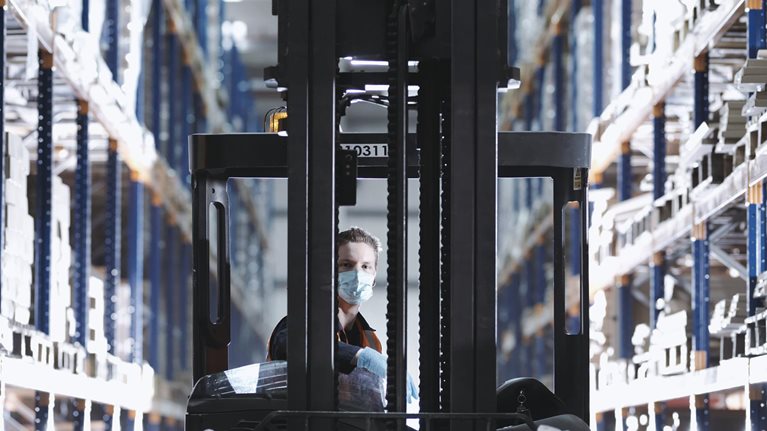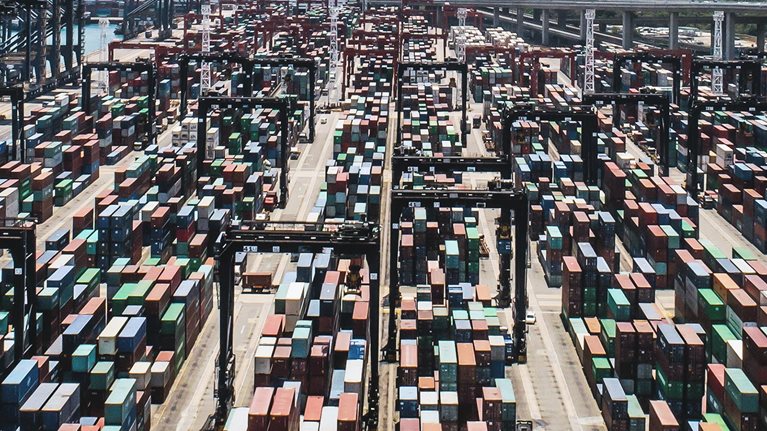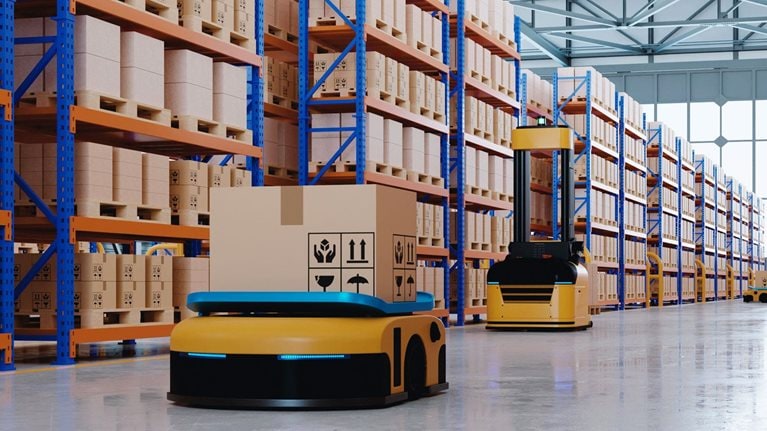Since the COVID-19 crisis began, it has affected almost all business operations in every sector and every part of India. Logistics has been particularly hard-hit, without which only certain cottage industries may function. Even before the second wave of the disease began, in the spring of 2021, the pace of recovery was unclear. In 2019, the McKinsey Global Institute (MGI) predicted that India’s logistics sector would expand at a compound annual growth rate of more than 10 percent, from $200 billion in early 2020 to at least $320 billion in 2025. Unfortunately, the sector’s future is much more uncertain now than it was when MGI made that forecast.
Although the picture is constantly evolving, there are things that we already know and things that we know we don’t know. The known unknowns, such as the pace of the recovery, will become less opaque over time. No doubt the sector also faces unknown unknowns, but that is always true, so they shouldn’t prevent Indian companies from assessing the problems and acting to correct them. In this paper, we consider solutions for warehousing and transport.
In the warehousing function, as we explain, companies could consider shrinking their product mix, allocating more inventory to essential items, reducing nonessential inventory, and introducing innovative packaging and materials-handling processes to reduce levels of human contact. In the transport function, the key steps for consideration are making tactical choices among less than truck loads (LTL), full truck loads (FTL), and milk runs for delivering goods and using efficient multimodal transportation more extensively.
Looking ahead, logistics players in every function can adopt digital technologies to stay relevant.
The impact of COVID-19 and the near-term prognosis
One thing we do more or less know is the pandemic’s impact so far on two key functions of the logistics sector: warehousing and transportation. In the near term, estimating demand, allocating capacity, and distributing products across sectors and regions remain difficult challenges.
Warehousing
Even in good times, very difficult and sophisticated inventory-management decisions are needed to manage inventory stored in warehouses. Ordering and maintaining appropriate quantities is now harder than ever because traditional forecasting techniques have become ineffective: experienced buyers make decisions to purchase raw materials, but that experience may count for less in a radically changed country and world.
Given these strong headwinds, most companies could shrink their product mix to allocate warehousing to the most essential items in their portfolio. Producers of nonessentials in particular could continue to minimize their inventories, which significantly increase their holding costs and take up valuable warehouse space. But for essential items, the ongoing uncertainty around supply means that it might make more sense for producers to keep inventories high than to risk stockouts. In any case, just-in-time approaches to scheduling may not work, at least in the near future.
Not surprisingly, the pandemic has made many companies question if large regional warehouses are really the best way to keep supply chains agile; smaller warehouses at more locations could be a better response to uncertainty.1 Lockdown restrictions have also forced companies to ask themselves whether distribution centers could maintain service levels more effectively than a warehouse system can. Such centers may certainly make it more fruitful to deploy the latest technology.
In the future, India’s warehousing industry may enjoy higher demand as producers shift their focus away from China and toward other Asian countries, including India itself. But one thing is certain: warehouses must reduce the amount of human contact involved in handling materials. As a result, demand for innovative packaging and materials-handling processes is rising throughout the supply chain. Companies that lease space in warehouses, for example, are demanding more streamlined and automated processes. Those that have their own facilities must implement such processes as well.
Transportation
COVID-19 has forced India to restrict the movement of goods across government-defined zones and across states, so the use of suboptimal routes has increased. Meanwhile, a shortage of drivers raised truck-rental costs by a staggering 56 to 74 percent.2 For these and other reasons, logistics functions may remain open to all options during and after the pandemic, so they will have to act nimbly.
The way companies use FTLs, LTLs, and milk runs, for example, is changing. In the supply chains of fast-moving consumer goods and some other products, milk runs are more efficient because they can effectively aggregate demand across several different SKUs and companies. To become more responsive to changing demand, companies are also increasing their use of LTLs.3 Strategically choosing when to use LTLs, FTLs, and milk runs to meet demand is one of the key decisions that must be made, and the principles that guided them before the pandemic have been overtaken by events.
A related trend—the rising importance of last-mile deliveries for e-commerce—has been underway for years, but COVID-19 has intensified it. Since the pandemic started, consumers around the world, and certainly in India, have been shopping online in much larger numbers, particularly for groceries. In fact, demand on India’s online grocery-shopping portals surged last year by up to 80 percent, just as their operational capacity fell by half.4 That, however, is a short-term problem. The long-term one is that logistics for last-mile deliveries must continue to rely on small, informal truck companies that lack the resources or sophistication to use modern methods. To stay relevant in the postpandemic next normal, all logistics partners will have to keep up with the shift to digital.
Of course, trucks dominate transportation in India’s logistics sector. But during the lockdown’s most stringent phases, railways have been the only mode of transport that operated without restrictions and could thus convey goods and commodities across the country at almost prepandemic levels.5 The railways have chiefly moved essential products: the need for a constant supply of them is pressing, and the output of nonessential goods has fallen because the businesses that manufactured and sold such products shut down as a result of continuing restrictions in place. In February 2021, for the first time since the pandemic’s onset, Indian Railways saw year-on-year revenue growth, signaling, at least for a time, the return of pre-COVID-19 levels of operation.6
Air shipping had taken a huge hit because air travel was in effect frozen or limited until only recently. In the past, a significant percentage of all air-freight shipments flew in the underbellies of passenger planes. Since most of them had been grounded, airline companies couldn’t afford frequent air-freight flights even for essential items. However, airline cargo operations are expected to recover to pre-COVID-19 levels by the beginning of 2022.7
One saving grace of the current crisis is that it has given India its best opportunity to shift toward multimodal transport—typically rail, supplemented by trucks for moving shipments to their final destinations. The government could encourage the transport of aggregated assortments of goods by rail not only to promote cheaper, faster multimodal freight transport but also to ease the pressure on road networks.
Pain points
In December 2019, several months before the crisis hit, McKinsey and the Indian Institute of Logistics8 conducted a comprehensive survey of the country’s manufacturing companies.9 One of the goals was to identify and understand the key external and internal pain points for logistics functions.
The survey found that the top three external pain points were the small number of formal transport companies that can use efficient technologies, India’s overstrained highways, and a severe shortage of drivers. The pandemic has exacerbated all of these problems, and individual companies can do relatively little to solve them.
Companies can do much more, however, about the top internal pain points: the failure of most logistics functions to use best practices, as well as the insufficient degree of coordination and collaboration between the warehousing and transport functions. Overcoming these two problems could help India’s economy, and the companies within it, to recover from the pandemic and prosper in the next normal. The solutions involve not only technology but also organizational structure and practices (see sidebar “Warehousing and transportation: How to remove the pain points”).
Technological challenges, opportunities, and structural reforms
In a McKinsey survey conducted last year on the readiness of Indian organizations for Industry 4.0, 66 percent of the respondents said that before the onset of COVID-19, their employers had implemented either no or very few Industry 4.0 use cases (Exhibit 1).10 Yet in the very same survey, 60 percent of the respondents reported that the pandemic had increased the value of Industry 4.0 initiatives (Exhibit 2). Organizations are therefore now more likely to implement technology projects across the value chain. The logistics sector in particular must do so.


The need for digitization in logistics
As we have seen, COVID-19 has revealed the weaknesses and inefficiencies of India’s current logistics system. Only a shift to more formal, technologically capable organizations may allow the sector to meet the challenges yet to come: the things that we know we don’t know—for example, whether, when, and how the COVID-19 crisis will finally end—not to mention the unknown unknowns. The pandemic has made this kind of agility, and the technological sophistication it demands, a necessity for survival, not just a competitive advantage. But almost all of the small, informal logistics players in the country’s supply chains (for instance, the firms that operate 75 percent of India’s trucks) cannot adapt to rapid technological change. Even many of the larger logistics companies may find it a challenge. All of these organizations, large and small, face serious threats.
The more successful larger companies throughout the logistics sector may gravitate toward artificial intelligence, blockchain, and other technological solutions to help solve for the present cash crunch and other problems (Exhibit 3). Technologies that promote the free flow of data—for instance, the sharing of information with logistics providers—will be more important than ever. To carry out the necessary transformation, companies may seek tighter control over their supply chains, so contracts with logistics and other suppliers will likely evolve (for example, through the adoption of the smart contracts mentioned in the sidebar “Digital logistics”).

These changes will reward companies with the resources and know-how to adopt them. McKinsey’s Travel, Logistics & Infrastructure Practice estimates that advanced technology could not only reduce logistics costs by as much as 25 percent but also help companies offer better service and free internal capacity for other purposes.
A slow but steady start toward digitization
Already, the logistics sector is beginning to change, but mostly at big companies, many of them based abroad. Organizations are scrambling to bolster the supply chains. A regulatory relaxation by India’s national government, for example, has enabled experimentation with beyond-visual-line-of-sight (BVLOS) drones in designated areas.11 About 13 companies, including food- and grocery-delivery businesses, budget airlines, and drone start-ups, have received approval to test BVLOS drones, which could be a game changer in last-mile deliveries. Similarly, multiple logistics players are innovating the way they operate through adoption of new technologies, such as blockchain, or through partnerships to help improve operational efficiency. Organizations have also started helping employees prepare for the digital future by improving their skills.
The current disruptive impact of the COVID-19 crisis shows clearly that long-awaited structural reforms to make logistics a formal, streamlined sector are more necessary than ever. The pandemic has exacerbated the sector’s long-term problems, but the solutions pose problems of their own for many large companies and almost all small ones. Yet these changes would have great benefits for the country as a whole.


